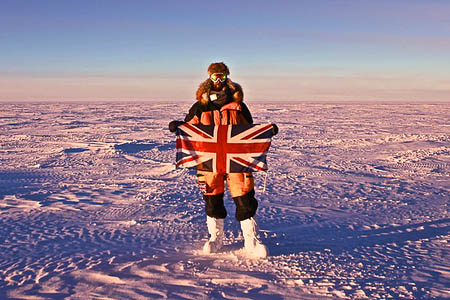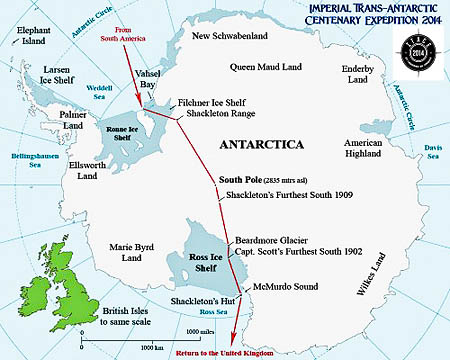A group of explorers plans to complete the Antarctic trek that Sir Ernest Shackleton attempted during his ill fated expedition.
The Imperial Trans Antarctic Expedition will tread in the intended footsteps of the explorer and his team to mark the centenary of the original journey, which ended with an epic rescue which saw all the adventurers survive.
Six men and women will set off in August 2014, exactly 100 years after Shackleton began his trip.
With the patronage of Shackleton’s granddaughter Alexandra Shackleton the ITACE 2014 team plans to follow the great explorer’s intended route, realising his polar ambition and capturing his spirit of adventure for the 21st century.
It will be the first time Shackleton’s route will have been attempted – honouring and celebrating just what it takes to push the limits of human possibility, a team spokesperson said.
The expedition will start in the austral summer of 2014 and take about 85 days to cross from the Weddell Sea to the Ross Sea via the South Pole.
The overland team will consist of six men and women from a variety of backgrounds and will be led by Joanne Davies, an experienced adventurer from south-east Cornwall.
Other team members are Dr Alexander Kumar, Stewart Stirling, Zac Poulton, Ian Prickett, Ro Sharma, Robbie Britton and Abi Evans.
Ian Prickett and Alex Kumar are also both involved in Sir Ranulph Fiennes’s recently announced expedition, The Coldest Journey which aims to make the first winter crossing of Antarctica next year.
A team spokesperson said: “When it comes to celebrating the human spirit, 2014 is going to be a special year.
“In 1914, as war clouds gathered over Europe, Shackleton was laying plans for an epic expedition: the first crossing of the Antarctic continent.
“He intended to sail through the uncharted waters of the Weddell Sea to Vahsel Bay before trekking by foot towards the geographic South Pole.
“From there his team would proceed towards the Ross Sea, destined for a rendezvous with their ship and victory after 1,800 miles of manhauling.
“Unfortunately disaster struck and Shackleton’s ship was crushed by sea ice leaving his team stranded in the freezing wilderness.
“By saving the lives of all 28 of his men, Shackleton’s leadership and survival skills have become the stuff of legend, but his intended course across the Antarctic continent remains uncompleted.
“In fact the world had to wait until 1958 for a team led by Dr Vivian Fuchs and Sir Edmund Hillary to successfully traverse Antarctica.”
In a desperate attempt to save his men, Shackleton escaped in three lifeboats to Elephant Island and eventually sailed the largest of the boats, the James Caird, to South Georgia, the most remote outpost of the British Empire at the time.
Shackleton organised four separate relief expeditions to rescue the remainder of his crew, but it would take four months of combined Norwegian, Uruguayan and Chilean effort to save the lives of the men left behind. Not a single life was lost.
Shackleton died of a heart attack in 1922 at the age of 47 and is buried among the Norwegian whalers at Grytviken Whaling Cemetery, South Georgia.
More details of the 2014 Imperial Trans Antarctic Expedition are on its website, along with biographies of the team members.


